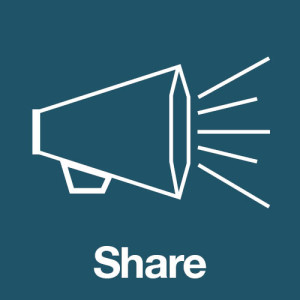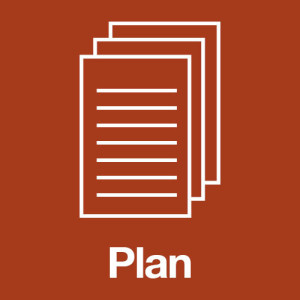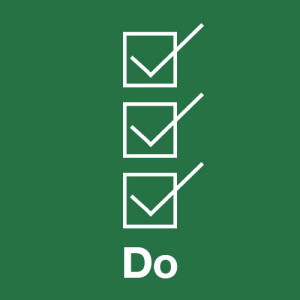My philosophy is that to get things done, you need to do three things: 1) Plan 2) Do and 3) Share.
You need to make a plan, you need to do the plan, and then you need to share what you’ve done. Simple as that.
My interest is in helping anyone interested in making positive and lasting change in the world, so I designed this for the use of nonprofits and the like, but it really works with anything.
Any good idea needs to be planned out. This helps you avoid pitfalls, disasters, and make the most of the good things that come along.
The thing about planning is that it takes time and everyone thinks that what they are doing is so important that it can’t wait. But it can and should. Proper planning is the key to success.
Think of it this way. Pretend you are going on a road trip across the United States, from Los Angeles to New York City. Where are you going to stop for gas? To sleep? What things do you want to see along the way? Which roads will you take? If you don’t plan those things out, you’re likely to run out of gas in underpopulated areas. Or you might find that you’ve landed in a city during a big festival and all the hotels are booked. You might even find your path blocked if a road is under construction.
The same thing goes for whatever endeavor you are embarking on. You have to figure out:
- WHY you are doing it
- WHERE you are doing it
- WHO you are doing it with
- WHEN you are doing it
- WHAT you are going to do to reach those goals
- HOW you are going to do it
Let’s run through these questions with the road trip scenario.
WHY are you going on this road trip?
Answering this question why will help you clarify your goals. If the goal is to get from Los Angeles to New York, then is taking a road trip in a car the best way? It’s probably not the fastest or cheapest way to get there. However, if your goal is to see the States, then that affects the rest of your plan. For instance, if you really want to see something that can only be visited in certain seasons or at certain hours, you need to know that so you can plan when to go.
Do you have any other goals? Consider the why of your project and create goals that will meet all your needs.
For the sake of this example, let’s say you work at an educational nonprofit that takes select students on a road trip each summer and your goals are:
- To take a road trip starting in LA and ending in New York City with 15 students (ages 16-18)
- To see all of the country’s major attractions (Mount Rushmore, Grand Canyon, etc.)
- To expose the students to different viewpoints, perspectives, cultures, and traditions
WHO are you going with?
In this example, you are going with a group of students. How does that affect your trip? A road trip alone might require some time downloading podcasts and music. But with a group of kids, the needs change. To begin with, what will you do for transportation? A large van? A school bus? A chartered bus? Also, you will be in charge of making sure these kids are safe. That means you might need chaperones and a set of written guidelines. And what about the educational aspect? There will be long stretches of time spent driving – do you need to prepare activities for them during that time or will they be left to their own devices?
Think about your goals. Making it from Point A to Point B is one success, but there are other measures of success. Did you make it to New York without anyone getting hurt? Did anyone learn anything?
WHERE are you going?
What cities and attractions do you absolutely have to see? Which ones could you skip if there isn’t enough time or money? The answers to these questions will help you build your path and your timeline.
WHEN are you doing it?
A cross country trip during the winter is very different than one in the summer. When is the best time to go when considering your goals? In your case, you might choose summer, because that is when the students will be out of school. What challenges and opportunities does a summer trip bring about?
WHAT are you going to do to reach these goals and HOW are you going to do it?
What do you need to do to make this program reality? Do you need sponsors? Do you need to charter a bus? Do you need to line up chaperones? These are all things you need to find the answers to before you go on your trip.
Once you know why you are doing it, what you need to do, who you are doing it with, and when and where, think about how you are going to make it all happen. Create a to do list that includes things like “hold an info session with parents” and “rent a bus” that will be important to have during the doing phase.
These questions don’t always need to be answered in this exact order (although it always helps to start with why), and you might find that when you answer one of the questions, you are answering others as well. The point is to make sure you think through all of these things before you take the next step.
Once you have a plan, you need to actually do it. Take the answers from the questions above and create a to do list. This list should include what needs to be done, who is responsible for getting it done, and when it needs to be done by. Don’t forget to cross things off the list when they are done – it’s one of the most satisfying things in the world!
Doing might require some additional planning, but try not to get stuck in limbo between planning and doing. If you’ve planned properly, the doing should be easy. If you start and find yourself on the wrong path, then you may tweak, but don’t second guess yourself before you’ve had a chance to act on your plan.
And don’t let procrastination kill your plan. For every minute you waste not acting, you also pull at the threads of your plan. Wait too long and it will unravel completely. Life moves at a fast pace and most plans are only good for a short window of time before they start needing to change.
 SHARE
SHARE
Here’s where a lot of people really miss out. If you’re doing cool things, you need to tell the world about it. We’re a very connected society these days and it’s almost impossible to do something really impactful without the help of a few (million) people. It’s not enough to plan and do, you need to get other people involved. This means you have to educate your audience, you have to do some marketing, and you have to market in a digital world.
For nonprofits, this piece is just as important as the planning and the doing. Sharing your good work helps engage your audience, strengthen your brand, bring in more money, and in general do all the things you need to do to keep the work going. Oftentimes, organizations take an unbalanced approach to business and put the bulk of their resources into programs, but it needs to be equally balanced between administration, governance, programs, and development (which Sharing would come under).
How you are going to share with everyone should be part of your initial planning. Going through a separate WHO, WHAT, WHY, WHERE, WHEN, HOW exercise is helpful.
When it comes to sharing (you could call this marketing), you have to start with who.
WHO is your target audience?
The answer to this can’t be “Everybody!” Be specific. If you are going on a road trip and you want financial help, who is going to do that? Your target audience might students that have gone on this trip in the past and their families. It may be sponsors or someone else entirely. When thinking about your target audience, consider demographics such as gender, age, and income. This is important because it changes what you say and how you say it.
What is going to make your audience actually do something? The answer to that is usually tied to their challenges and interests. If you know of a wealthy donor that is from South Dakota, your message to them might lean more heavily on the benefits of seeing Mount Rushmore than it would a donor from somewhere else.
The messages and channels you use with the students you are trying to recruit for the trip will be very different, so you’ll have to complete this exercise for each group you are sharing with.
WHERE is your audience?
Now I don’t mean where they are geographically. I mean where they are in your marketing funnel. Do they know that you exist? Do they know about your program? The messages and tactics to “seal the deal” (whether that be getting recruits, getting donors, or something else) will be different depending on where they are in the funnel. For someone who doesn’t even know they are looking for your program, they might find you through a Google search because you wrote a blog using keywords that likely donors would use. An alumni of the program already knows all about you, so you might reach them through personal emails or calls. Always meet your audience where they already are.
This is relevant not only for their place in the marketing funnel, but where they spend their time. You might be able to find wealthy donors on LinkedIn, but you’re not going to find 16-18 year old students there. They are much more likely to be on Instagram or Snapchat. The teachers of those students might be reached through an academic publication.
WHY should your audience care?
This ties into your target audience’s interests and challenges. What can you offer them and why should they choose you over someone else. Maybe one of your audience’s (parents) has a hard time finding something for their kids to do in the summer. You can present your road trip as an option. But why should they choose your trip instead of someone else’s summer camp or even a babysitter? What makes you unique?
WHAT is your message to this audience?
Once you have your target audiences fleshed out, you know where they hang out, why they should choose you, what do you want to say to them? What can you say that will make them act? Take this one step further and create a Twitter-ized version of the message in only 140 characters. If you can’t get your point across in this short amount of space, continue refining.
There are lots of ways to track engagement these days, so if you find that one message isn’t working, try another.
WHEN will you share the messages?
If you are trying to capture an audience that doesn’t know who you are, you might have to share messages early. Make sure you calendar out your marketing plan.
HOW will you do this?
The information that you’ve gathered will help you figure out your goals, strategies, and tactics. For this trip, one of your goals might be: To recruit 15 students for the road trip.
Strategies are the approach you take to achieve those goals. So, for the goal, one strategy might be to broaden the number of schools you reach out to. A tactic is the tool you use to reach your goals based on your strategy. So, in this case, your tactics might be to hold information sessions at new schools with parents. Another might be to launch a social media campaign targeted at students.
—————-
And that’s it. That’s my philosophy. Plan, Do, Share – rinse and repeat.
I’ve find it works well for me, both personally and professionally. Give it a shot the next time you have a challenge or opportunity you want to pursue and see how it works for you. Obviously the amount of time spent planning, doing, and sharing will change based on the size of the project, but the basic structure I have laid out will help you get through it relatively smoothly.
Good luck!
Download my workbook to help guide you through this process



Join My Email List
Sign up to receive occasional emails from me. You'll get:
- Musings on how to make the world a better place.
- Invitations to join in on for-purpose related happenings.
- Other fun stuff that I'll think up on a later date.
You have Successfully Subscribed!